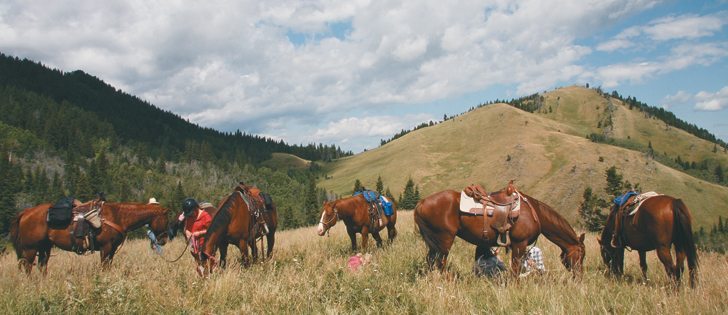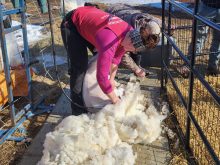Industry needs to focus on welcoming those without prior experience, say leaders
RED DEER — How to attract new people to horse culture is a growing conundrum as baby boomers leave the industry with no one to fill their saddles.
The future of the business was a major discussion at the Alberta Horse Breeders Conference held in Red Deer Jan. 9-11.
“The bottom line is the horse industry has been shrinking throughout North America and throughout most of the world. Our baby boomers are moving on. We are just not refilling their boots as quickly as we need to,” said Arabian horse owner Gary Millar, who owns Millar Venture Arabians at Fort Saskatchewan, Alta., and is involved in the Arabian horse literacy program to teach children to read and enjoy horses.
Read Also

Charges laid after cattle theft
Saskatchewan RCMP lay two charges against a man after six cattle went missing.
“We definitely have to look at some new markets, and we have to change. It is going to be very difficult for us in some regards because we are going to have to begin to do some things differently. We are looking at attracting a public where many of them probably have little or no horse experience but they have probably dreamed about galloping their horse across some field.”
Horses are used mainly for entertainment, which requires disposable income, said Dale Befus, who owns Alberta Carriage Supply, which markets equipment to the heavy horse industry.
Horse associations need to advertise in magazines such as those found on airlines to promote themselves because they are read by people who probably have extra money to spend on luxuries.
The public buys other forms of entertainment, but the horse sector needs to reach children early on so when they enter the workforce they will think about spending money on horses.
Millar said horsemanship should also be promoted as a healthy lifestyle choice for the entire family.
“We need to find a way for that five-year-old girl to get involved at a level where she will enjoy it,” he said.
“We can educate her and educate her parents and create a feeling that being involved with horses is an active, healthy lifestyle.”
Veterinarian Jodie Santarossa focuses on equine sports medicine and supports expanding the industry because it contributes to the provincial economy. She encourages using horses for education as well as physical and mental health therapy.
She wants to see a welcoming atmosphere within the horse sector so that new people from different backgrounds with no horse experience still feel their needs are met.
“Maybe their goal isn’t to compete or to show. Maybe their goal is to move through some emotional or physical disability,” she said.
As well, newcomers to the sector want to know the qualifications of trainers and instructors, which makes standardized education necessary for these professionals.
A panel discussion at the conference agreed that breed and discipline associations could take more responsibility to encourage newcomers. As well, board members should act as ambassadors to promote horses, and associations need to simplify because they are becoming mired in policy, rules and regulations.
“They have to believe those statistics that say only 15 to 13 percent of all horse owners even show, yet our horse associations exist today because of their shows,” Millar said.
“The horse associations have to get it that we have a new group of people out there who are just aching to get in and we have to invite them in.… We have to begin to structure ourselves so it makes it easy for the new person to get involved and progressively grow and improve their horsemanship and if they want to show, provide a place to socialize and have fun.”
Befus, who is part of the Calgary Stampede’s equine committee, said the public also needs more exposure to what horses can offer. Horse events are staged regularly at Stampede Park, but few show up to watch and become fans.
“If we don’t get them excited, it is going to be a slow steady decline,” he said.
Calgary trainer Clay Webster said the perception of elitism and occasional inappropriate behavior at horse events can also distract newcomers.
“We need to make sure we have our temperament in check,” he said.
“How we conduct ourselves around other people at all times will help make or break the situation for those who want to enter the industry.”
There is also disunity within the industry, in which the different breeds and disciplines do not work together and at times seem to be at odds with one another. That detracts newcomers.
“You guys are all part of a bigger industry, but you are fighting with your neighbour down the hall,” said Santarossa.
Millar said social media gives the public a negative view when members of the industry post negative comments online.
“It is very confusing when you hear the infighting, the caustic comments that are often made. We have got to stop that,” he said.
barbara.duckworth@producer.com


















